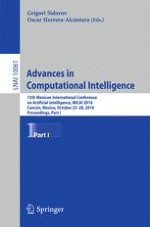2017 | OriginalPaper | Buchkapitel
Characteristics of Most Frequent Spanish Verb-Noun Combinations
verfasst von : Olga Kolesnikova, Alexander Gelbukh
Erschienen in: Advances in Computational Intelligence
Aktivieren Sie unsere intelligente Suche, um passende Fachinhalte oder Patente zu finden.
Wählen Sie Textabschnitte aus um mit Künstlicher Intelligenz passenden Patente zu finden. powered by
Markieren Sie Textabschnitte, um KI-gestützt weitere passende Inhalte zu finden. powered by
